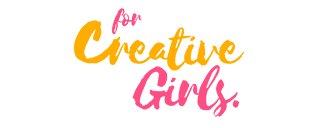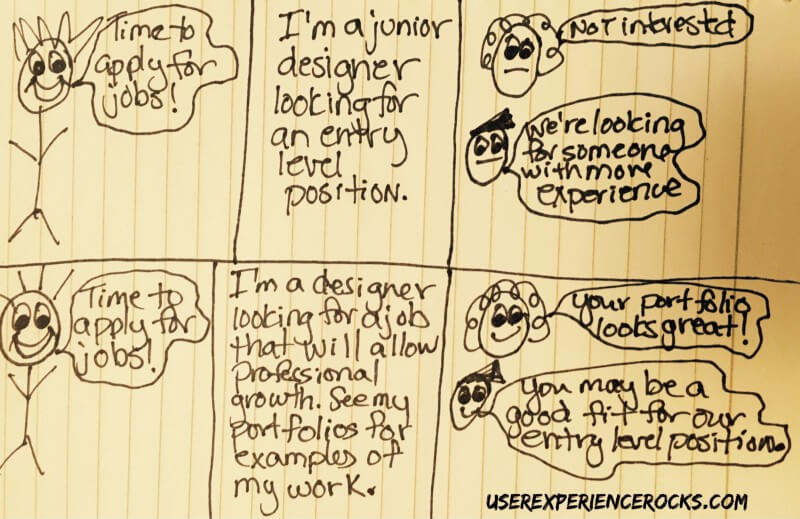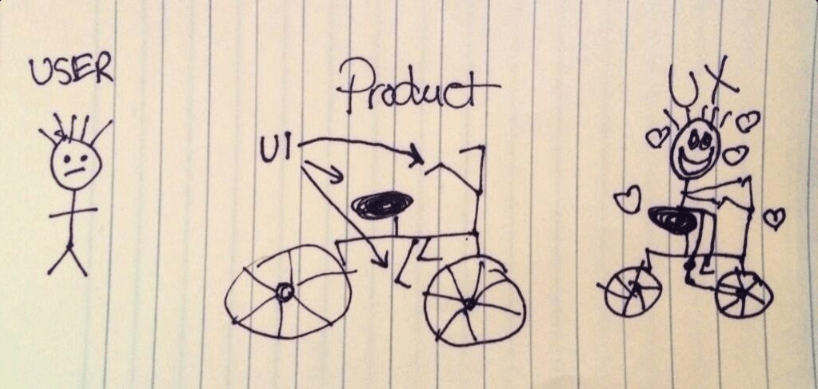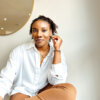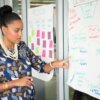During our conversation with Dami Busari, she introduced us to Jennifer Aldrich’s UX blog and we fell in love with it. And we thought to ourselves, ‘Why keep this wealth of info? We need to share it!” So, ladies…meet Jennifer.
Jennifer Aldrich is the UX & Content Strategist at InVisionApp and a blogger at UserExperienceRocks.com. Her career focus has mainly centered on usability testing, user research, content strategy, information architecture, product design, and interaction design. Jennifer’s writing has appeared in tech publications and blogs including UX Mag, Net Magazine, InVision Blog, MediaShift, and Usability Geek. A big believer that sharing knowledge is one of the most powerful ways members of the UX and design communities can make an impact on the world around them, Jennifer encourages people to do so through writing, mentoring, and speaking engagements. A little inspiration can go a very long way.
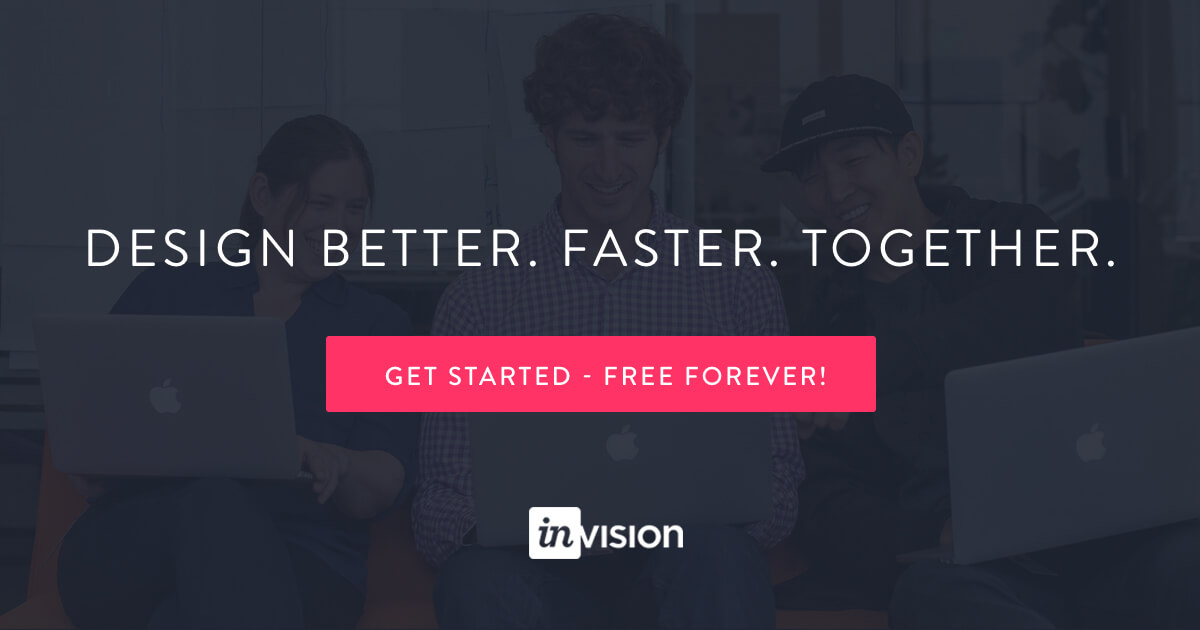
Here’s our chat with Jennifer:
For Creative Girls: We love your blog User Experience Rocks, the doodles, and simplicity! Why did you decide to start blogging about Design and UX in particular?
Jennifer Aldrich: I started blogging about UX because I wanted to have a place to capture all of the tips and tricks I was learning during my career journey so I wouldn’t forget them. The blog was honestly just for me when I started—I never expected it to catch on the way it did!
We are curious, what was the first encounter that drew your heart to Design? Describe your path to where you are now as a Content and UX Strategist at InVision.
Before I joined InVision, I worked for a startup for 8 years. I spent the first 4 years of that time flying all over the US to train teams on our software and get a feel for how the product was used from a user’s perspective. I also had the opportunity to witness areas they struggled with, and deep dive to find out why they were struggling with them.
I was loaned out to our product development team during a massive product overhaul (we recreated our entire product on .NET to allow flexibility for future enhancements). That gave me the opportunity to work closely with the design team, and I immediately fell in love.
What struggles did you encounter when you first started designing? What was the toughest glitch you had to deal with in your career to this point?
One of the first issues I ran into when I started my career in design was trying to decode all of the crazy acronyms we use in this industry! Haha. We basically speak in secret code. What most people would normally think of as glitches, I consider learning experiences. Taking on that mindset helps you keep your sanity—especially in the early stages of your career.
We asked a Designer friend of ours how she was able to cope with the unforgiving world of design as a beginner. What are your thoughts? Isn’t it very scary at first? How does a beginner cope with the designers tearing their work apart?
In the beginning, the toughest part is definitely surviving design critiques. Hearing people shred something you poured your heart and soul into can be devastating in the early days (and sometimes even later into your career). One of my mentors once told me that it’s okay to feel upset and that all designers do in the beginning, but it gets easier over time. Just hold it together and be professional in the meeting, then give yourself some time to wallow afterward. Then let go and move on to the next critique. Once you’ve been in the industry for a while, you’re able to really soak in the feedback and you realize that the critiques really do help you become a better designer. But every single designer on earth has a tough time in the beginning and tends to get overwhelmed. Don’t feel like getting upset is a “wrong” response—it’s a human response.
You have a mentoring community for junior/new UX pros. What role has mentoring played in your career and why did you decide to build this community?
I wouldn’t have a design career at all if it weren’t for my mentors taking a chance on me. I didn’t have any formal design background or training. I joined the team as a UX Editor and Content Strategist, and they mentored, supported, and encouraged me until I was eventually able to transition to working on product designs. Without my mentors I never would have made the jump to design—I’m forever grateful to them for taking a chance on me and for giving me the opportunity to dive into a career that I absolutely love. I created the mentoring community to help others in the industry who are just starting out, to give them the same mentoring opportunity that I was given.
What’s your process/framework for approaching a new design or product?
I’ll outline the process I followed at my last gig. I started by talking to stakeholders to understand what problem the new product or design needed to solve. Folks often ask for something specific, but as you dig you realize that what they’re asking for is really related to an underlying issue. It’s better to attack the root of the problem rather than slapping a band-aid on the superficial one.
Next, I did some user research to make sure that the issue we’d uncovered was one that would improve the experience users had with our product.
After that, I began sketching out concepts. I have exactly zero artistic skill, but the sketching helped me gather my thoughts. Then I moved on to wireframing out the initial design.
Next up, I did design reviews with the design team and the development team and tweaked (or overhauled, depending) the design as necessary. Including the dev team in our design reviews really helped us remain agile.
The design was then passed off to our incredibly talented graphic designer, who made gorgeous mockups of the primary screens. From there, we’d use InVisionApp to create a rapid prototype so we could conduct usability testing.
Based on the results of the usability testing, we’d tweak the design (which is exceptionally easy in InVision, since Sketch syncing is integrated), and then we’d do another round of testing. If things looked good at this point, I’d work with what we called a Code Architect to identify the best tech to build out the solution, and then we passed along the detailed design specs to our awesome developers.
After the developers were done, I’d do a final UX review, checking through the functionality, as well as details like microcopy and error messaging. (We did this in InVision as well, through the commenting feature.) Once complete, the product enhancement would be put into our next release cycle.
So, what’s your definition of Creativity? And how do you then see design generally?
I think creativity encompasses a huge range of skills and passions and outlets. Design gives us the opportunity to improve the lives of the people who encounter our products. Life is hard. Great design makes life a little less hard.
We are particularly crazy about your doodle on the difference between UX and UI. Why do you think people get the two mixed up a lot?
I think that we use so many acronyms in our industry that sometimes the confusion just lies in not knowing what they stand for. In addition, the lines between UI and UX have blurred quite a bit over time. Some feel that they’re now meshed together, while others still consider them separate areas of design. (I’m one of those people.) 🙂
Being a woman in the design industry, is there any peculiarity to it? Does it make your work more interesting or tough?
Honestly, my design career began on a team that was predominantly women, with some exceptionally supportive, wonderful men.
In my opinion, if you find yourself on a team that makes you feel that it’s tough to be a woman in the industry and you feel that your contributions aren’t being appreciated, then you’re on the wrong team and you should look for a job elsewhere. (I typically recommend keeping your job until you find a new one in order to avoid financial stress, but if the stress of the job is too much to deal with, you have to do what you feel is right.). Not all teams are awful environments for women—many are fantastic for all employees, regardless of gender. You just need to make up your mind not to settle until you find one that’s a good fit.
What design projects/job have you worked on in the last couple of months? And what are you working on now?
Right now I’m working on a variety of projects inter-departmentally, some that are UX and design related and some that are not. One of the things I love most about InVision is that there is a huge opportunity for professional growth. The folks I work with are phenomenal, as are the opportunities to explore projects I may not have had the chance to contribute to elsewhere. I’m having a blast, and I feel very fortunate to work alongside so many talented individuals on a daily basis.
To stay in touch with Jennifer, follow her on Medium, Twitter and read her amazing UX blog.
